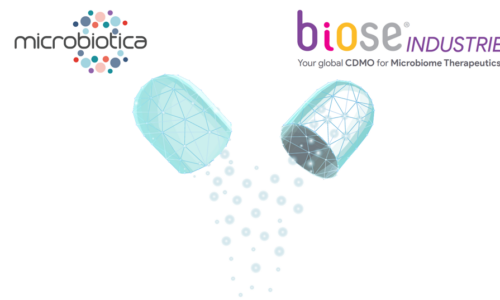The vaginal microbiota plays a key role in regulating vaginal health. Unlike other human microbiomes where bacterial diversity is positive, a healthy vaginal microbiota is associated with Lactobacillus species dominance. Lactobacillus spp. maintain vaginal community composition through lactic acid production and epithelial binding, protecting the host from pathogenic species.
In 2002 the first study using molecular methods to analyse vaginal microbiome make-up was conducted. In which, researchers evaluated the bacterial flora of post-menopausal women by PCR techniques. Since then, through the adoption of more advanced molecular methods like 16S metagenomics, our understanding of the complexity and dynamism of the vaginal microbiota has evolved significantly. And whilst research is early for this microbiota niche it is implicated in a range of indications.
These include:
- Bacterial Vaginosis (BV) – Affecting roughly 20% of child-bearing women, bacterial vaginosis is indicated by a loss of Lactobacilli species and an overabundance of anaerobic species. The resulting dysbiotic microbiota leads to symptoms like altered vaginal discharge, and discomfort. Antibiotics are often used to treat BV, although given their microbiome disrupting effects, alternatives are being examined.
- Vulvovaginal candidiasis (VVC) – Not just consisting of bacterial strains, the vaginal microbiome naturally contains fungi (mycobiome) and viruses (virome) too. During periods of dysbiosis, an overgrowth of albicans often occurs, leading to Vulvovaginal candidiasis – the most common vaginal fungal infection. In vitro studies have demonstrated vaginal mucosal cells treated with L. Crispatus strains reduce C.albican adhesion capabilities, presenting live bacterial supplementation as a potential alternative to traditional antifungal treatments in the future.
- Urinary Tract Infection (UTI) – UTIs are most commonly caused by coli strains. It has been recorded that the quantity of UTI-causing bacterial strains in the vagina increases significantly preceding symptoms, highlighting the role of the vaginal microbiota as a starting point for the condition.
- HIV – Whilst the mechanism is unclear, a link between a dysbiotic vaginal microbiota and incidence of HIV acquisition has been identified. One hypothesis for this is the dysbiotic microbiota disrupts the vagina’s epithelial barrier, resulting in closer proximity between HIV particles and the host’s immune cells. This is supported by a recent paper, in which metaproteomic analysis demonstrated women dominated by vaginal lactobacilli had higher abundance of bacterial lactate dehydrogenase which is positively associated with increased epithelial barrier proteins.
The health implications of a disrupted vaginal microbiome are clear, but what factors lead to perturbed community composition?
- Sex – Studies have identified associations between sexual practices and vaginal microbiota disruption. For instance, women who have sex with women (WSW) show an increased risk for developing BV. One study found sex with a new partner increases the diversity and quantity of BV-associated strains in WSW. Other sexual factors shown to alter microbiome composition include unprotected penile receptive sex, vaginal sex after anal sex, and oral receptive sex. The mechanism for microbiota disruption varies sex practice to practice. For example, penile receptive sex may negatively impact vaginal flora due to the cytokine upregulating and pH lowering of semen.
- Antibiotic exposure – Unsurprisingly antibiotic treatment can deplete bacterial species in the vagina thus disrupting community balance, leading to disease states.
- Birth control – Some research has identified a positive role of progestin-based hormonal contraception on vaginal microbiota composition, finding decreased incidence of BV and increased lactobacilli dominance in users. There have been mixed findings regarding the impact of copper intrauterine devices on vaginal microbiome composition.
Although, the vaginal microbiome drug landscape is in its beginning stages, there is lots of innovation taking place in the sector. Hailing from Cambridge, Massachusetts LUCA Biologics inc. is developing its first drug candidate to target UTI and will enter the clinic this year for a phase 1b clinical. Raising $2.8 million in funding in 2019, the Seed Health backed company will develop live biotherapeutic products for indications including: preterm birth and bacterial vaginosis. Working on a platform of “living medicines”, LUCA sources its strains from a 1000+ strain and gene catalogue assembled from Dr Jacques Ravel’s research group. Described in Nature, Dr Ravel’s VIRGO catalogue includes 0.95 million non-redundant genes (Ravel et Al. 2020). LUCA will no doubt be a front runner in the vaginal microbiome field, supported by Dr Ravel’s world-leading expertise.
Currently within phase 2, Nexbiome Therapeutics’ LBP candidate, BGY-1601, aims to treat acute vaginitis.
Also targeting the vaginal microbiome Osel inc. are developing a live biotherapeutic product to prevent BV and rUTIs. Osel’s LACTIN-V contains the bacterial strain Lactobacillus crispatus CTV-05, selected for its role in maintaining microbiota community composition. Lactovbacillus crispatus being shown to be depleted in women with BV, this drug aims to restore lactobacillus dominance. In a Lancet published paper, LACTIN-V treatment of BV was associated with lower proinflammatory cytokine IL-1α and soluble E-cadherin, an indicator of epithelial barrier integrity.
Ferring, Rebiotix and MyBiotics are collaborating on live microbiota formulations to address BV. In 2021 the groups released an announcement outlining a multi-year strategic collaboration. MyBiotics’s CEO, David Daboush explained the project would combine their “MyCrobe” culturing platform with Ferring and Rebiotix’s development experience.
Gedea Biotech aims to develop “the first antibiotic-free treatment” for BV prevention. Citing the growing public health threat of antibiotic resistance as a driver, Gedea’s BV candidate, pHyph, hopes to address an unmet medical need. Founded in 2015, Gedea have conducted multiple studies to validate their product and will be embarking on a study into VVC soon.
Approaching the vaginal microbiome in a subtractive approach is Intralytix, who are examining the applications of phage to treat BV.
Some researchers are avoiding drugs altogether and are instead adopting approaches akin to fecal microbiome transplantation to modulate vaginal microbiome health. Vaginal microbiome transplantation is being examined for applications in treating rUTI and BV. A recent paper from Massachusetts General Hospital, Boston, outlines a protocol for an “FDA-approved donor screening protocol and detailed methodology for donation collection, storage, screening, and analysis of VMT material” contributing to the work needed to standardise this novel practice.
Ma, B., France, M.T., Crabtree, J., Holm, J.B., Humphrys, M.S., Brotman, R.M. and Ravel, J. (2020). A comprehensive non-redundant gene catalog reveals extensive within-community intraspecies diversity in the human vagina. Nature Communications, [online] 11(1), p.940. doi:10.1038/s41467-020-14677-3.


